CFD Analysis of the Pressure Drop Caused by the Screen Blockage Rate in a Membrane Strainer
Abstract
:1. Introduction
2. Design and Conditions for Numerical Analysis of Autostrainer
2.1. Autostrainer Screen Shape Design
2.1.1. Shape and Dimensions of Screens in Autostrainers
2.1.2. Design of Autostrainer Screens
2.1.3. Application of CFD to Autostrainers
2.2. Shape Modeling and Grid System Construction for CFD Analysis
2.2.1. Shape Modeling and Grid System
- Application of CFD for the cross-section of the slot (2D shape)
- Application of CFD to autostrainers (3D-shape)
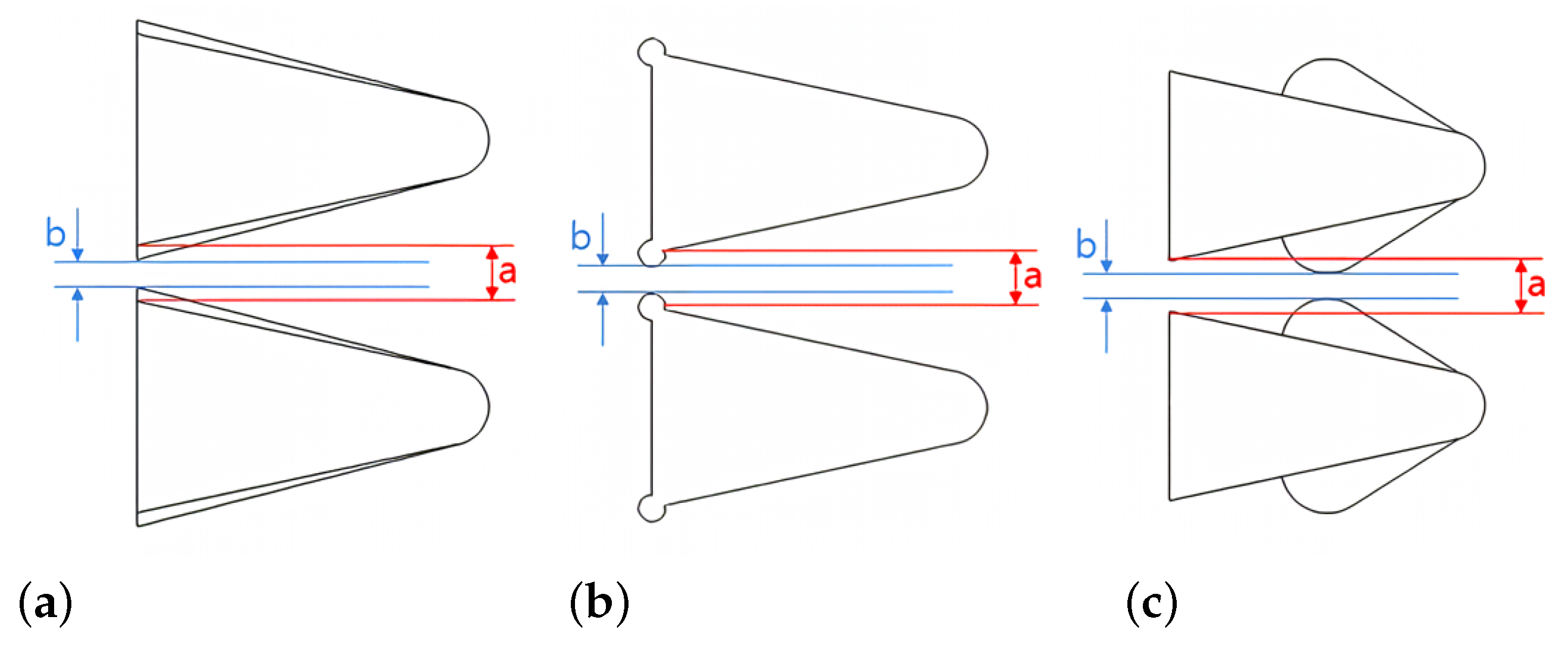

- Composition of the space grid system for CFD
2.2.2. Numerical Approach
2.2.3. Boundary Condition for Numerical Analysis
3. Experimental Results and Analysis by Scenario
3.1. Two-Dimensional Analysis Results for Each Scenario
3.2. Comparison between the Test Results of Pressure Differences and the Results of CFD for Autostrainers
3.3. Analysis Results of 3D CFD According to the Screen Blockage Rate
4. Discussion—Design Parameters
4.1. Headloss Coefficient (K), Flow Coefficient (Cv), Discharge Coefficient (Cd)
4.2. Additional Consideration (Particle Settling Rate)
5. Conclusions
Author Contributions
Funding
Data Availability Statement
Acknowledgments
Conflicts of Interest
References
- ANSYS CFX-12.0 User Manual. 2012. Available online: https://www.afs.enea.it/project/neptunius/docs/fluent/html/ug/main_pre.htm (accessed on 11 April 2024).
- Lim, J.I.; Park, J.H.; Kim, J.H.; Kim, D.J. Flow analysis of sea-water strainer. Ksfm J. Fluid Mach. 2009, 333–334. [Google Scholar]
- Jung, I.S. A Study on Pressure Drop Analysis of Strainer for Vessels. Master’s Thesis, Dong-A University, Busan, Republic of Korea, 2012. [Google Scholar]
- Sin, B.G. An Experimental Study on the Design, Production and Performance Test of C-type Strainer for the Improvement of Flow Characteristics—With a Focus on the Comparison with Y-type Strainer. Ph.D. Thesis, Hanse University, Groningen, The Netherlands, 2016. [Google Scholar]
- Jameson, A.; Schmidt, W.; Turkel, E. Numerical Solutions of the Euler Equation by Finite Volume Methods Using Runge-Kutta Time Stepping Schemes. In Proceedings of the 14th Fluid and Plasma Dynamics Conference, Palo Alto, CA, USA, 23–25 June 1981. [Google Scholar]
- Denton, J.D.; Xu, L. The Effects of Lean and Sweep on Transonic Fan Performance. In Proceedings of the ASME Turbo Expo 2002: Power for Land, Sea, and Air, Amsterdam, The Netherlands, 3–6 June 2002. [Google Scholar]
- Lee, Y.G.; Yuk, J.H.; Kang, M.H. Flow Analysis of Fluid Machinery using CFX Pres-sure-Based Coupled and Various Turbulence model. Ksfm J. Fluid Mach. 2004, 7, 82–90. [Google Scholar] [CrossRef]
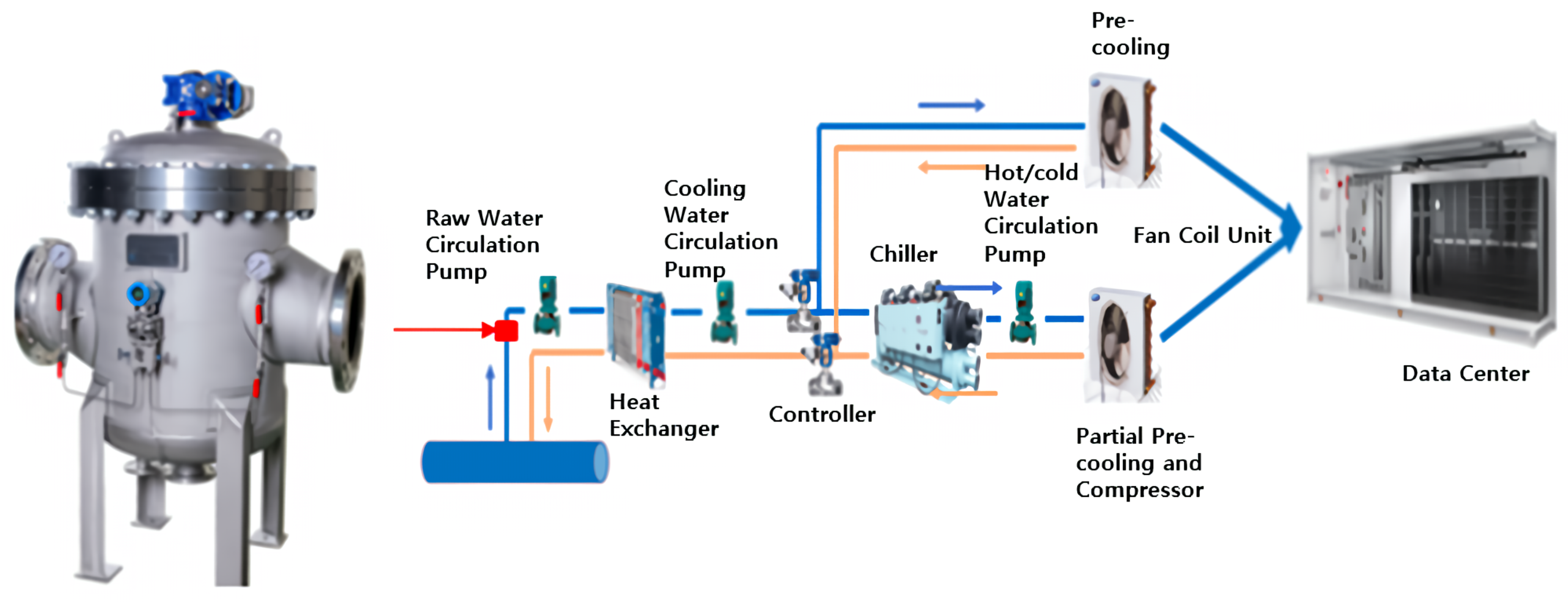
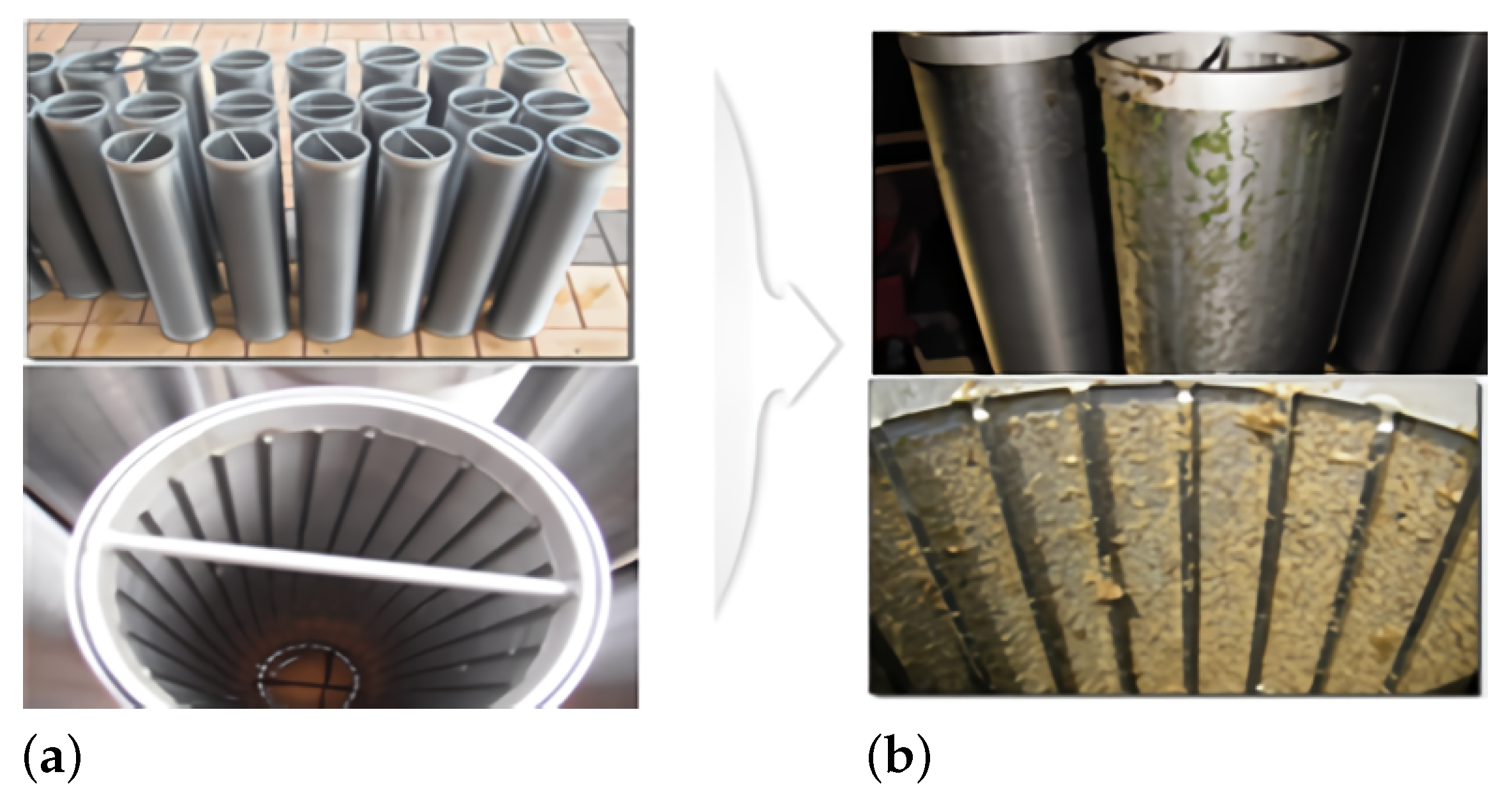
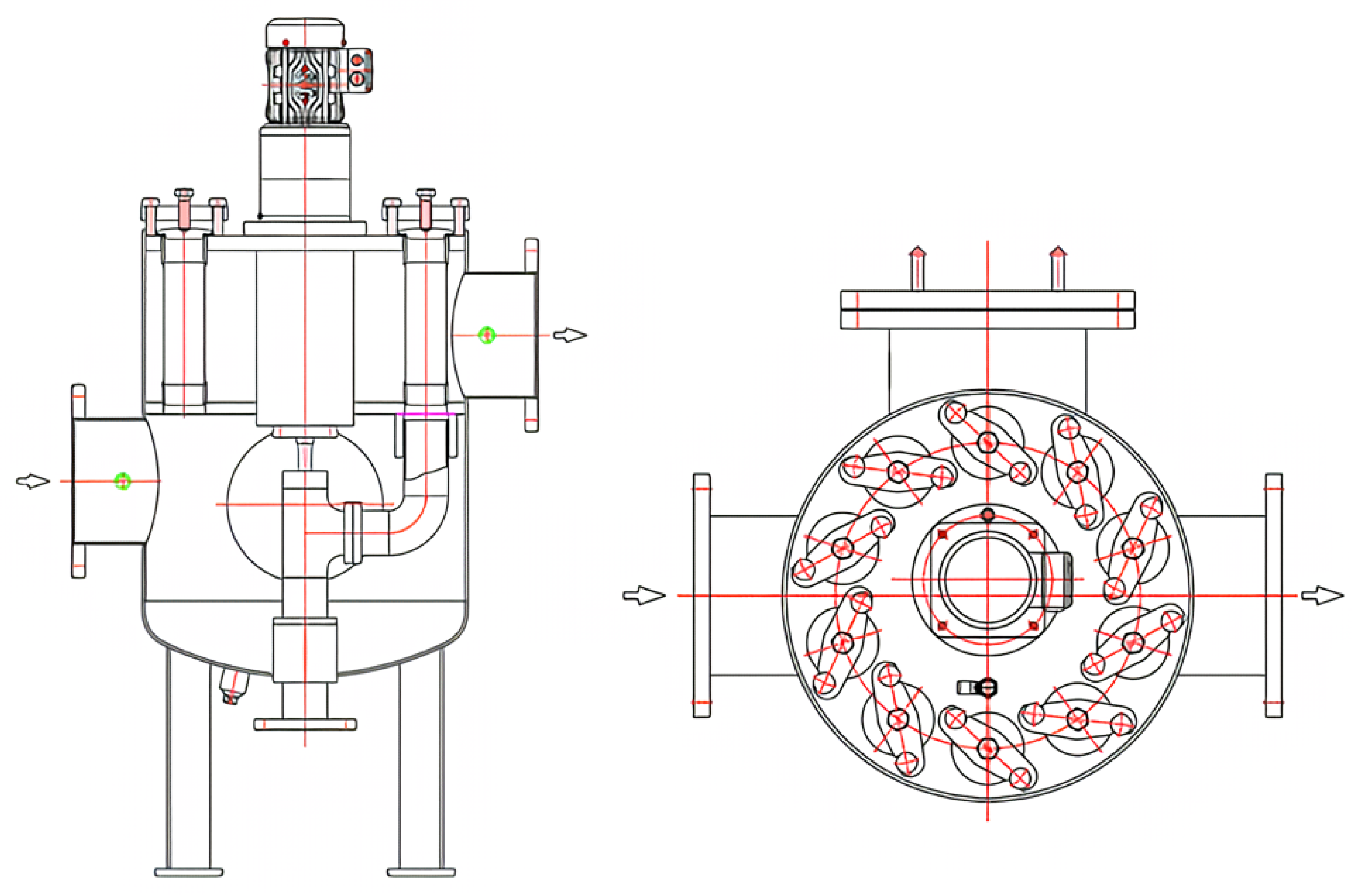
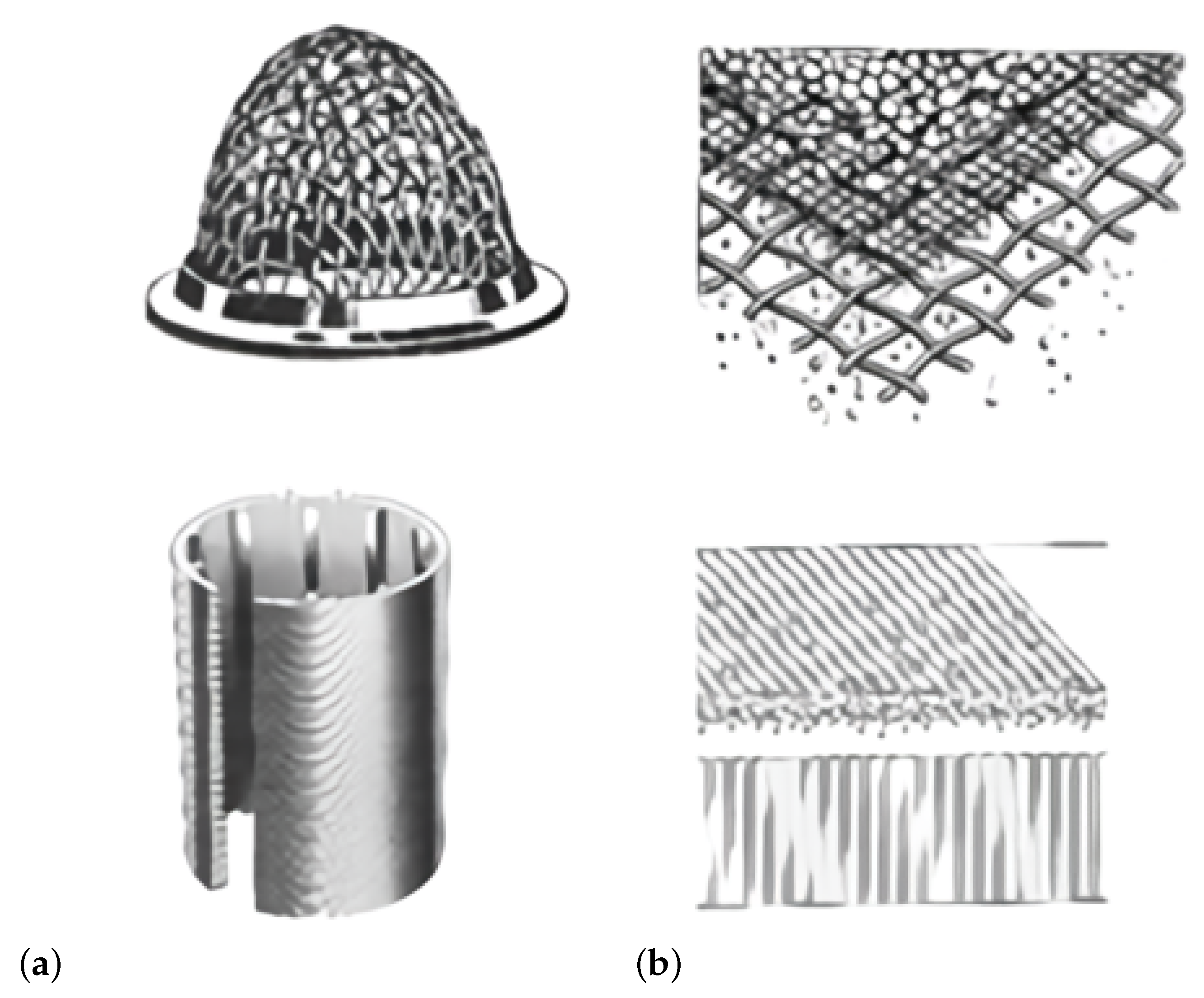


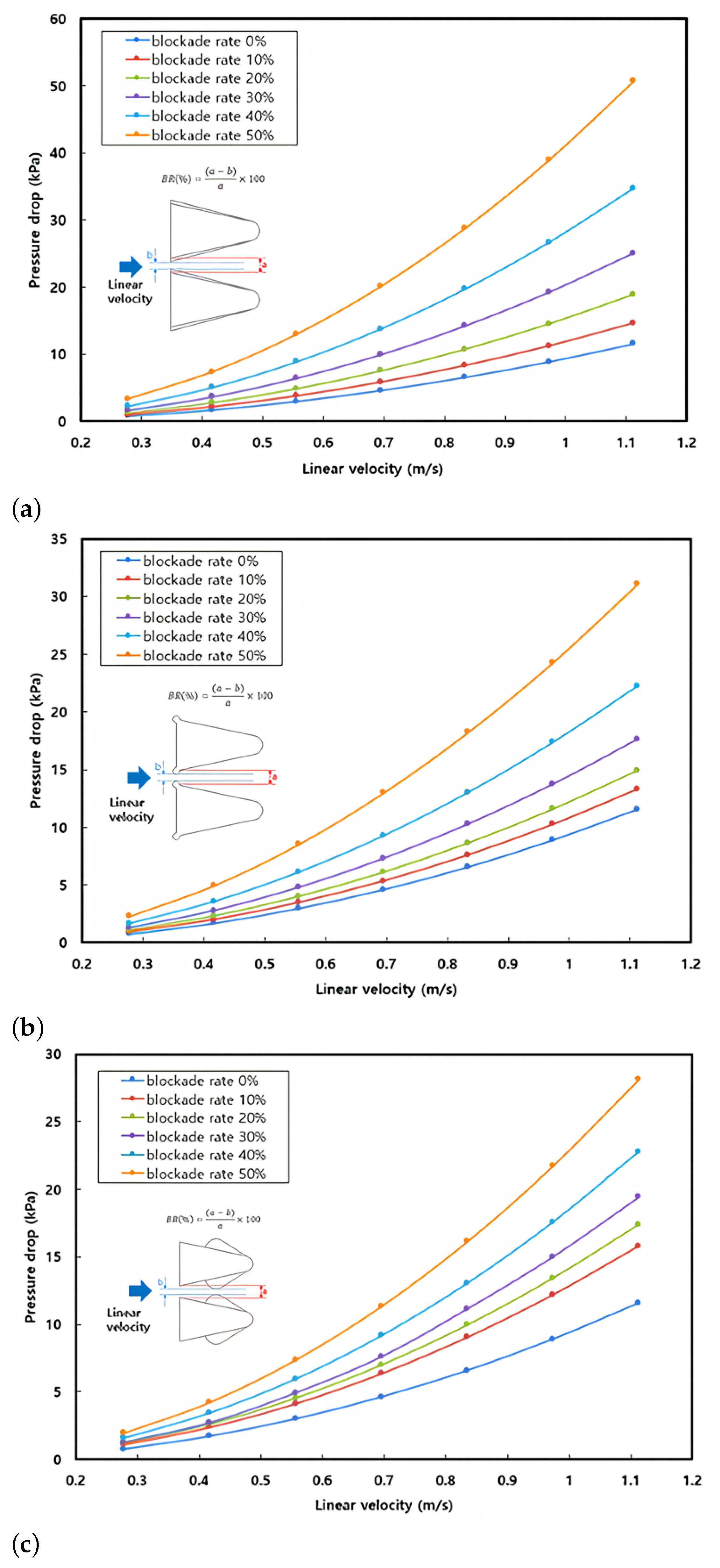
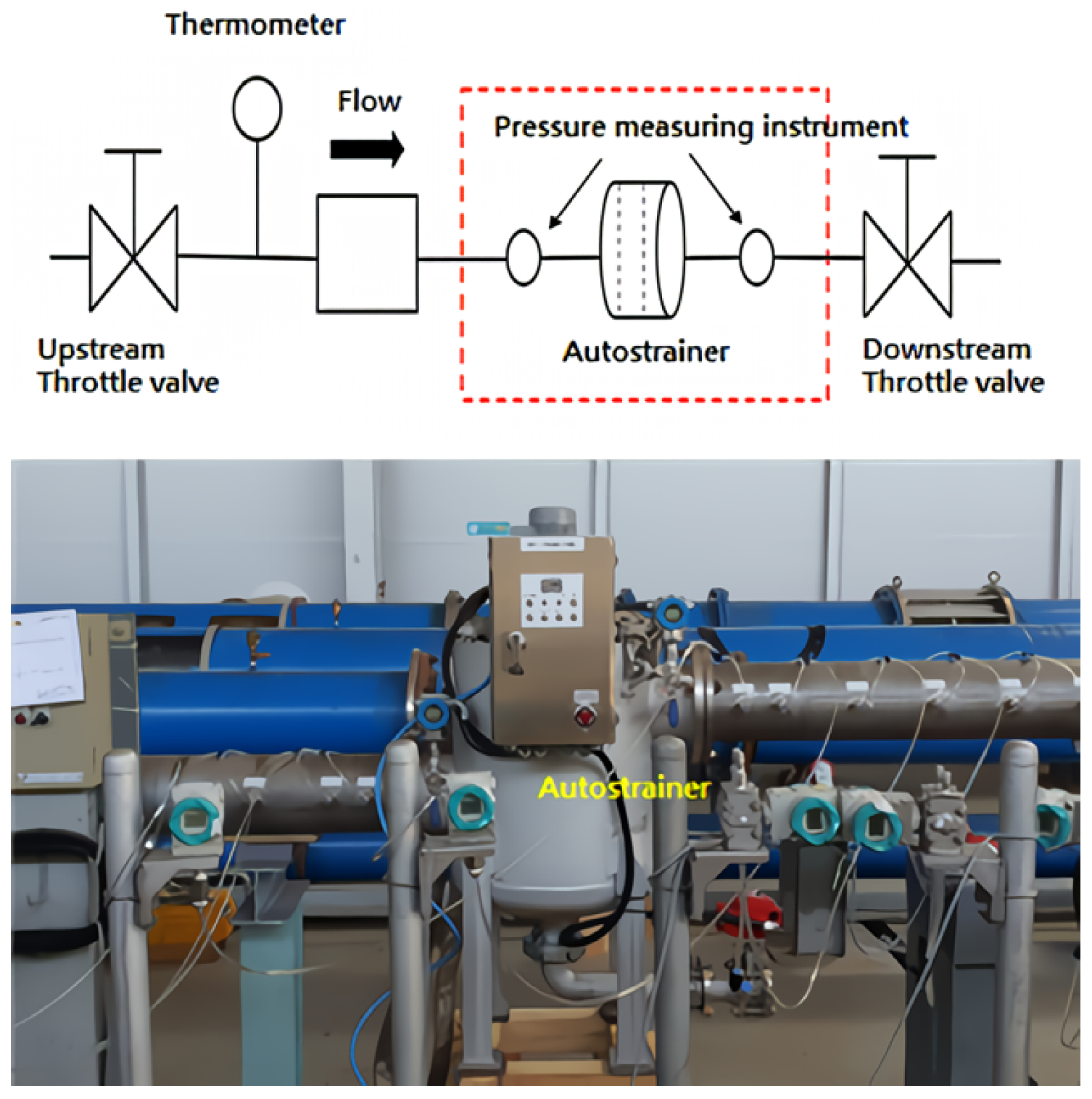
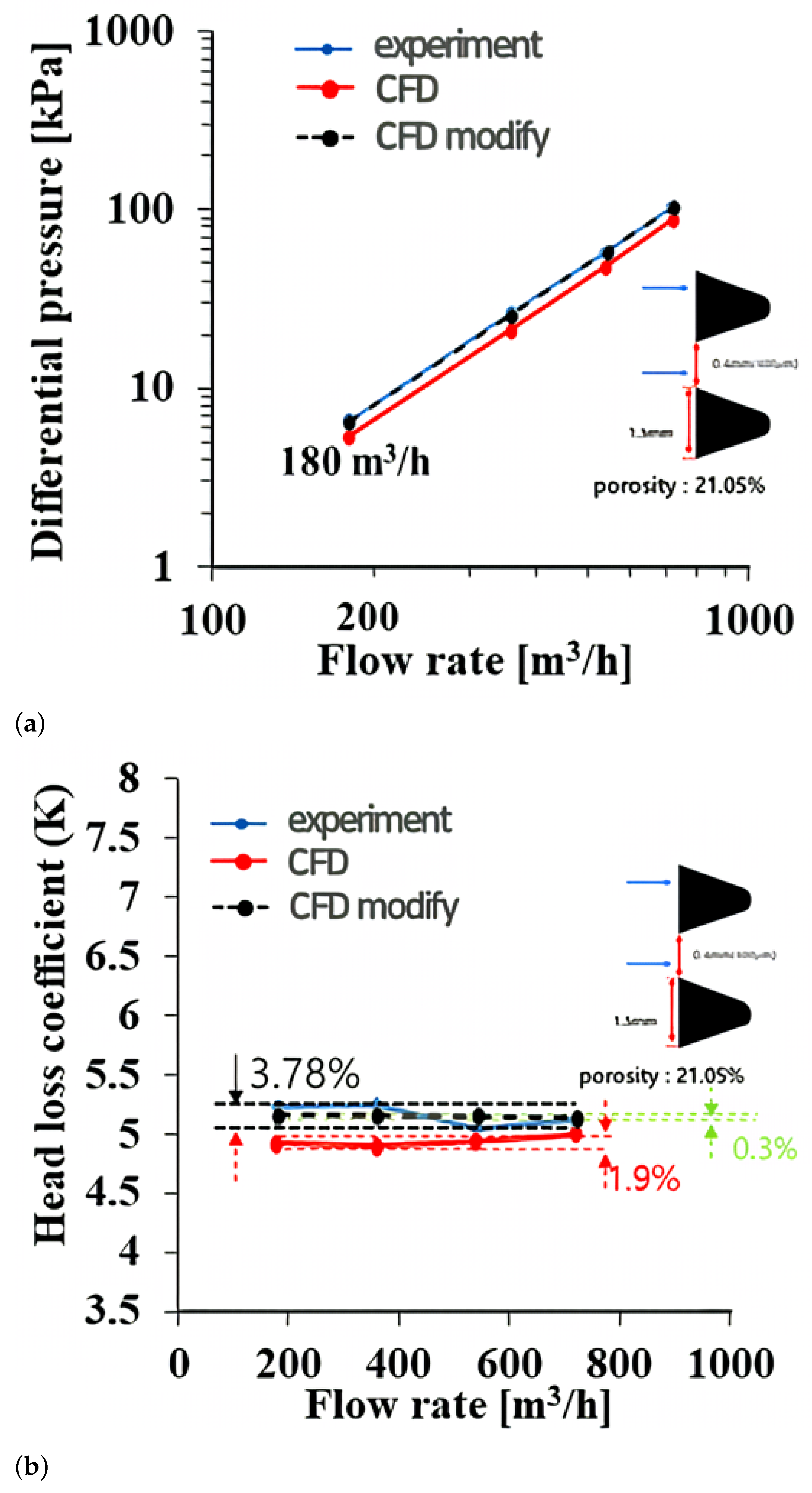
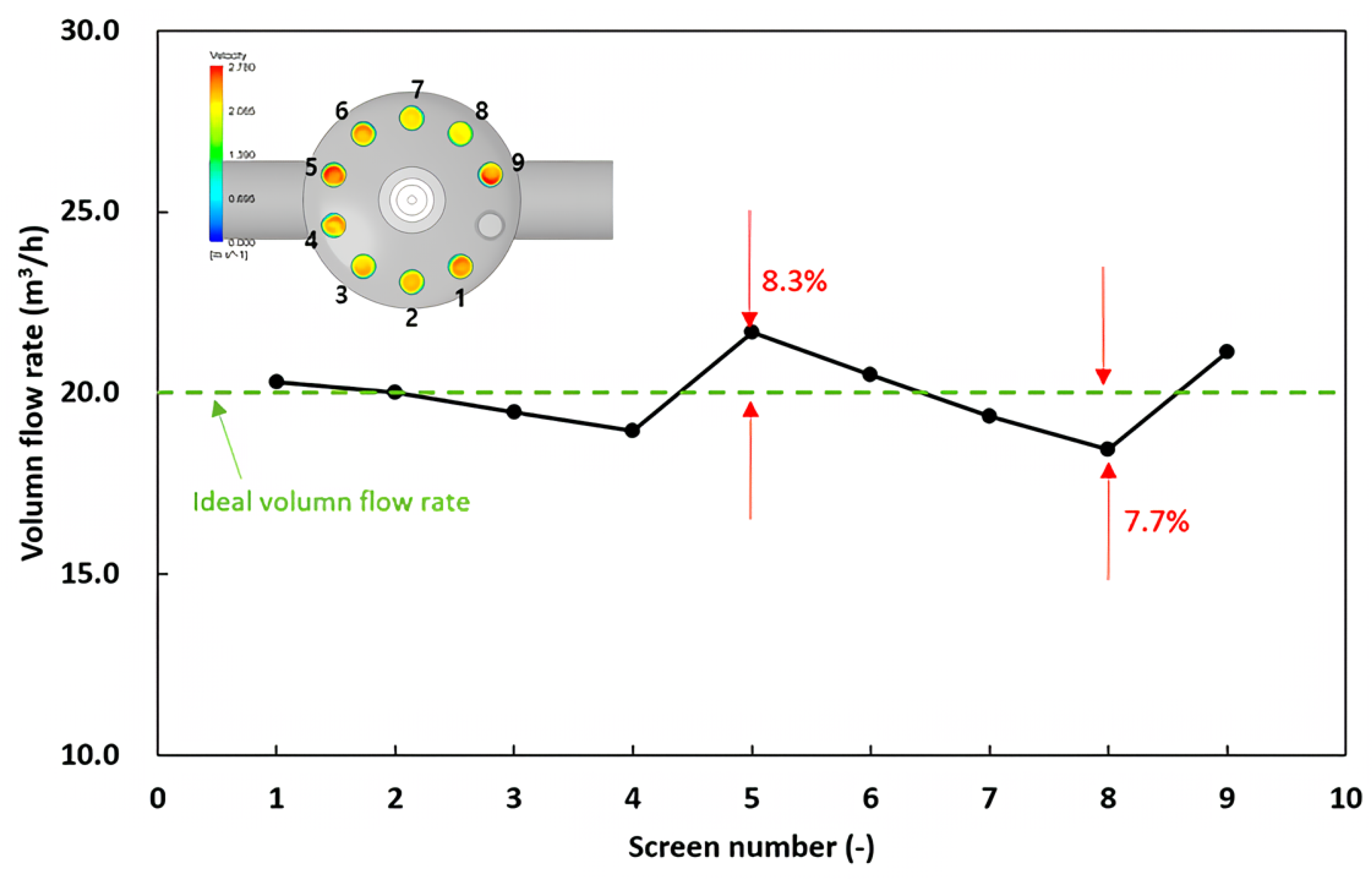

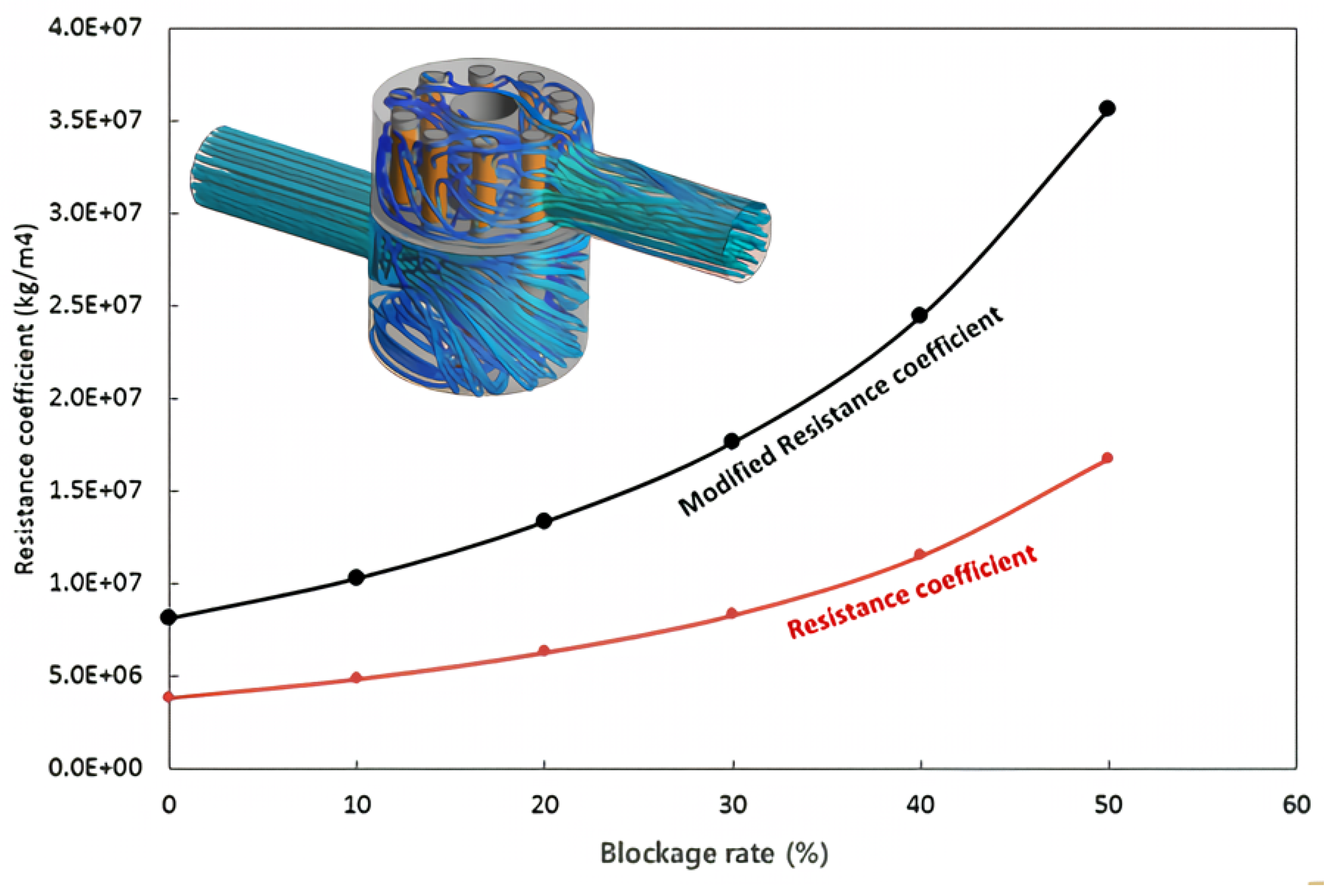

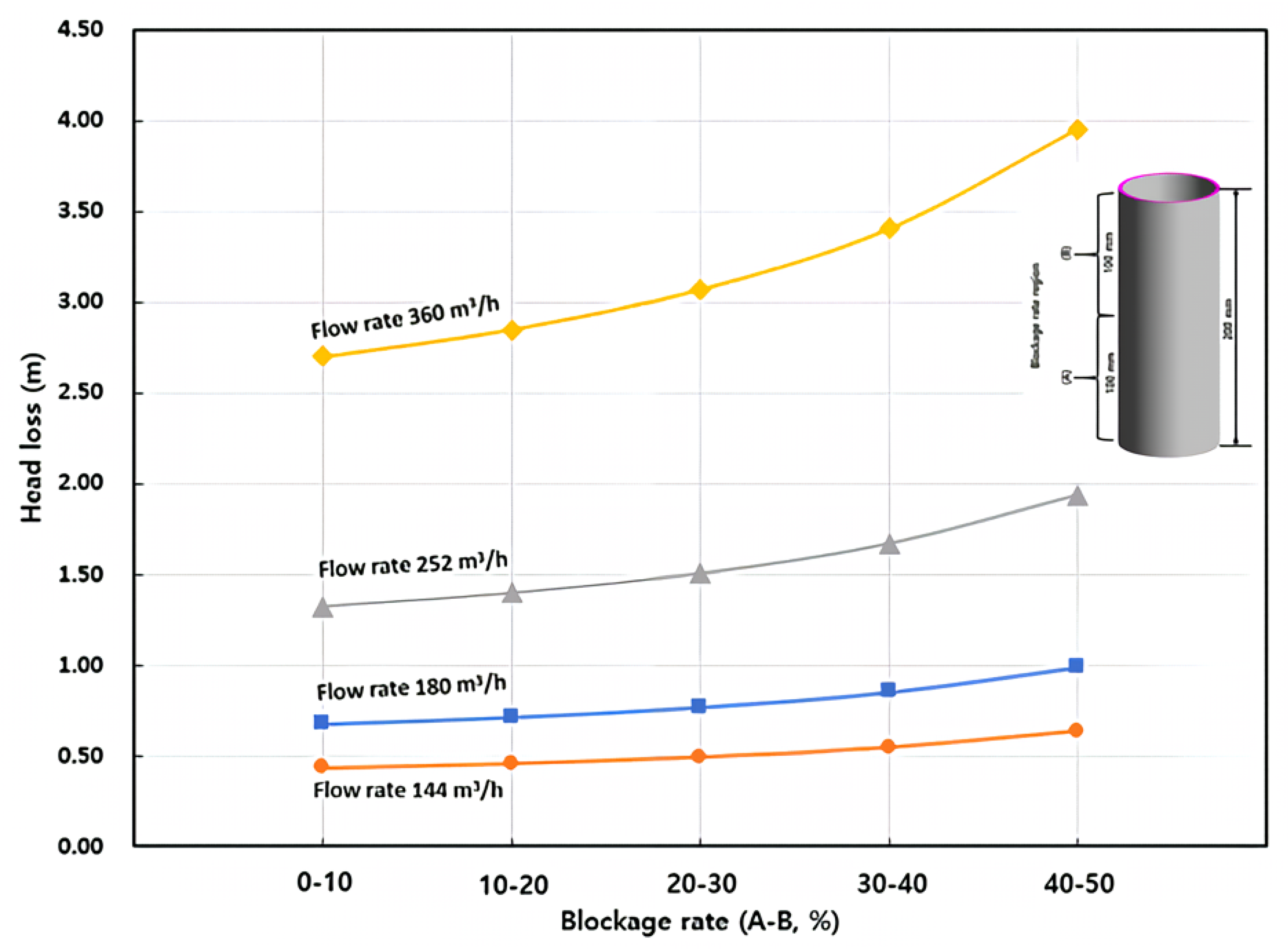
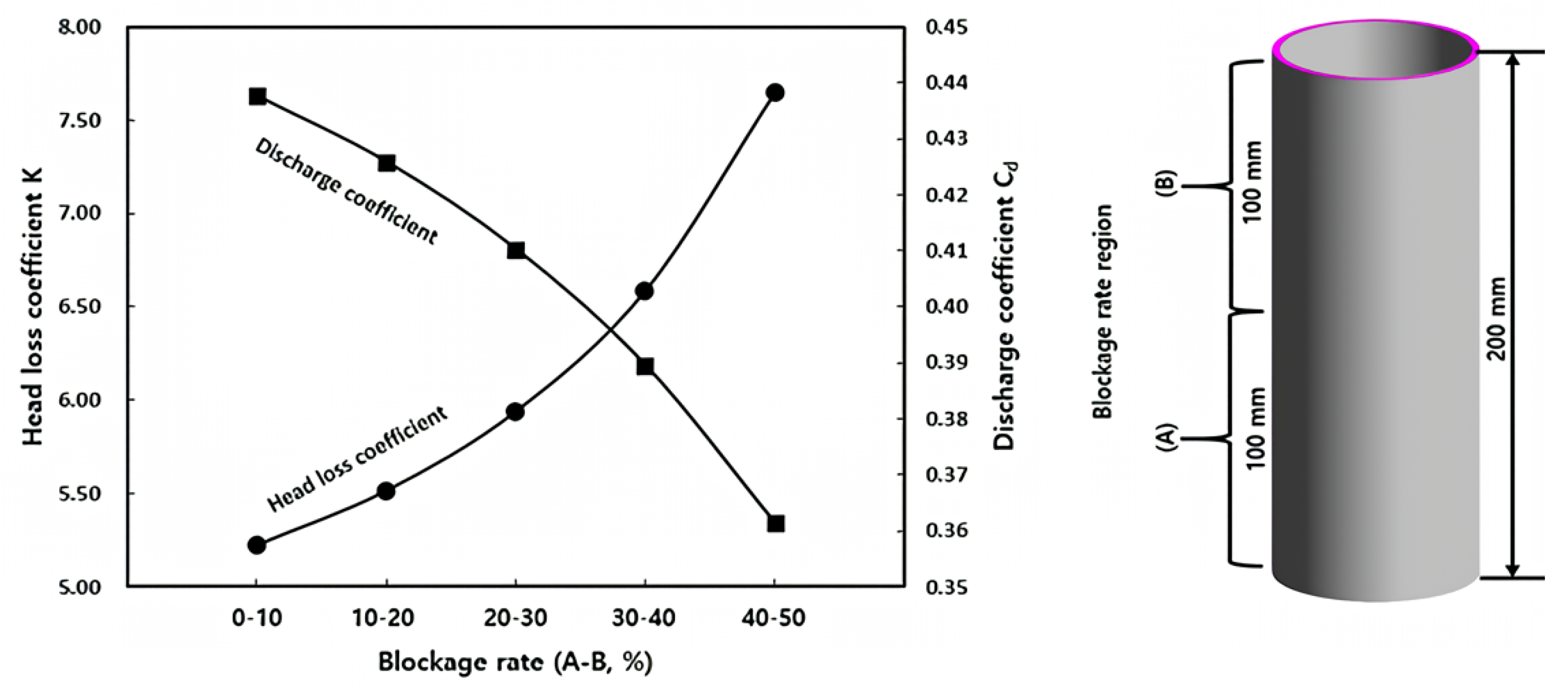
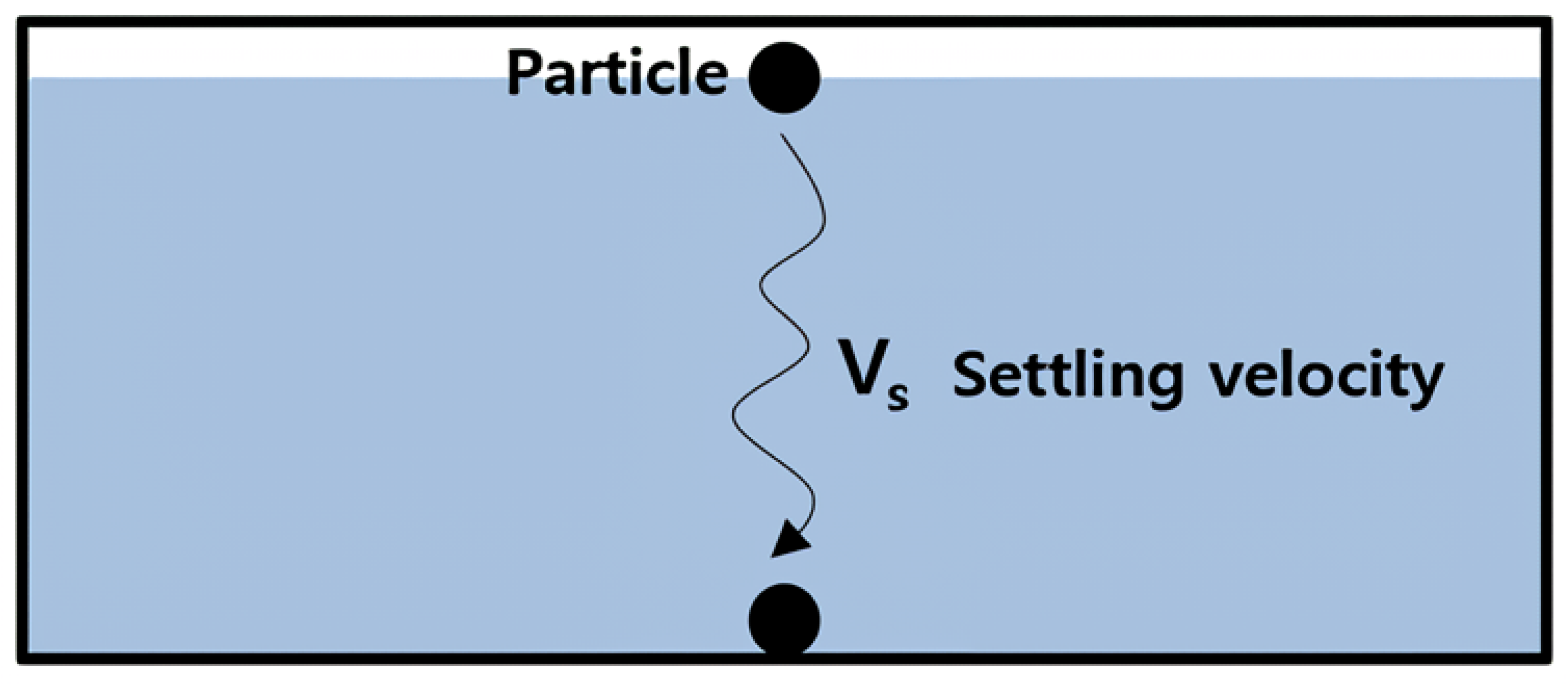
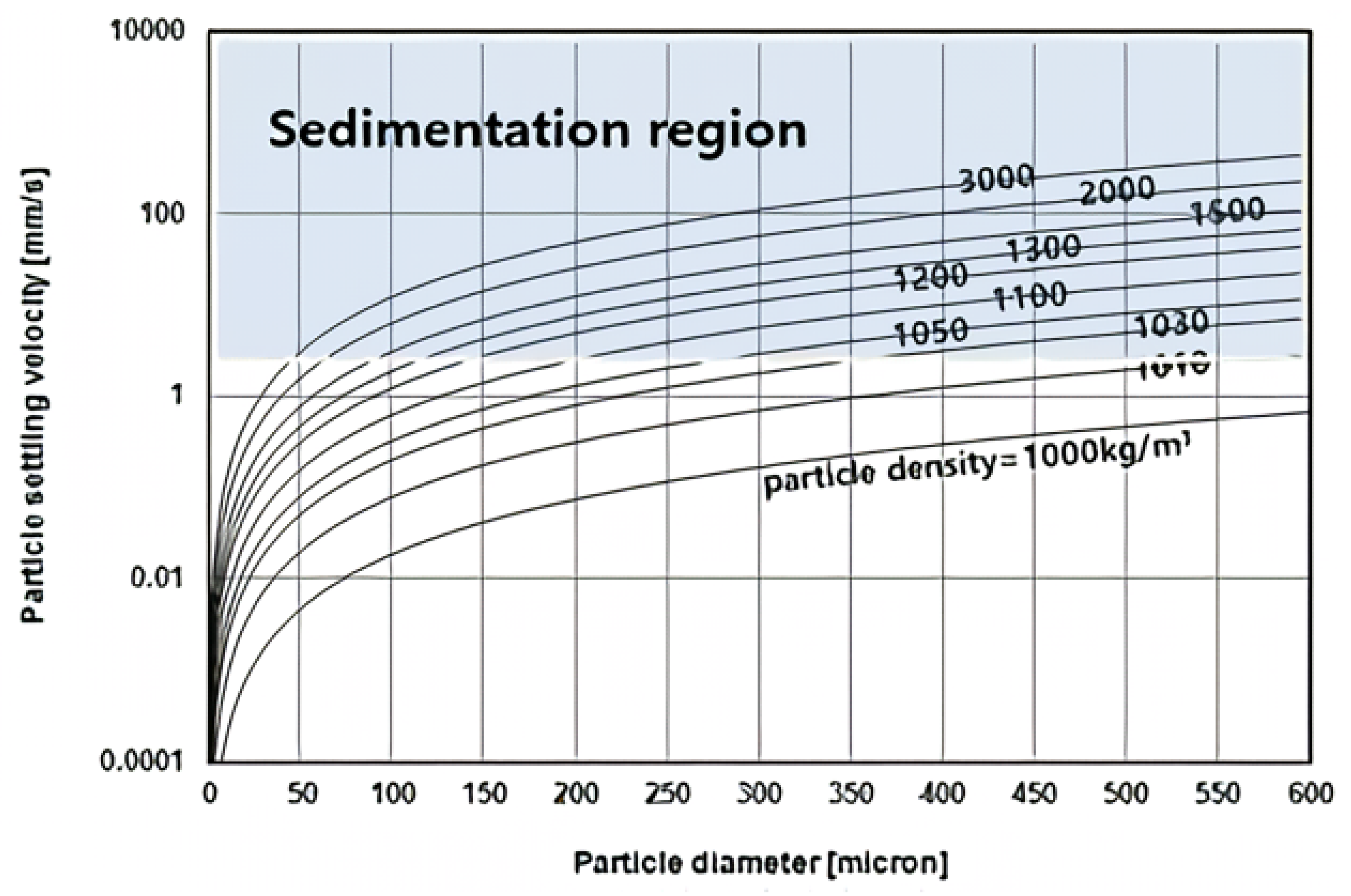

| Blockage Rate (%) | Headloss Coefficient (K) | Flow Coefficient (Cv) | Discharge Coefficient (Cd) |
|---|---|---|---|
| 0 | 5.150 | 816.055 | 0.441 |
| 10 | 5.395 | 797.258 | 0.431 |
| 20 | 5.752 | 772.161 | 0.417 |
| 30 | 6.267 | 739.745 | 0.399 |
| 40 | 7.097 | 695.109 | 0.375 |
| 50 | 8.479 | 635.952 | 0.343 |
| Blockage Rate (%) | Headloss Coefficient (K) | Flow Coefficient (Cv) | Discharge Coefficient (Cd) |
|---|---|---|---|
| 0–10 | 5.223 | 810.296 | 0.438 |
| 10–20 | 5.515 | 788.583 | 0.426 |
| 20–30 | 5.940 | 759.830 | 0.410 |
| 30–40 | 6.587 | 721.519 | 0.390 |
| 40–50 | 7.651 | 669.486 | 0.32 |
Disclaimer/Publisher’s Note: The statements, opinions and data contained in all publications are solely those of the individual author(s) and contributor(s) and not of MDPI and/or the editor(s). MDPI and/or the editor(s) disclaim responsibility for any injury to people or property resulting from any ideas, methods, instructions or products referred to in the content. |
© 2024 by the authors. Licensee MDPI, Basel, Switzerland. This article is an open access article distributed under the terms and conditions of the Creative Commons Attribution (CC BY) license (https://creativecommons.org/licenses/by/4.0/).
Share and Cite
Min, I.; Choi, J.; Kim, G.; Jo, H. CFD Analysis of the Pressure Drop Caused by the Screen Blockage Rate in a Membrane Strainer. Processes 2024, 12, 831. https://doi.org/10.3390/pr12040831
Min I, Choi J, Kim G, Jo H. CFD Analysis of the Pressure Drop Caused by the Screen Blockage Rate in a Membrane Strainer. Processes. 2024; 12(4):831. https://doi.org/10.3390/pr12040831
Chicago/Turabian StyleMin, Inhong, Jongwoong Choi, Gwangjae Kim, and Hyunsik Jo. 2024. "CFD Analysis of the Pressure Drop Caused by the Screen Blockage Rate in a Membrane Strainer" Processes 12, no. 4: 831. https://doi.org/10.3390/pr12040831




